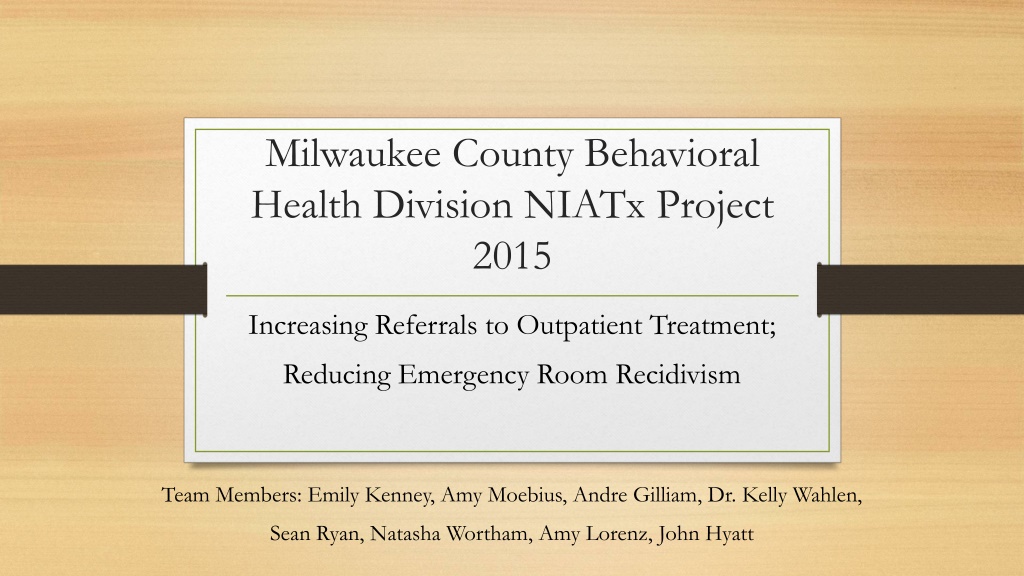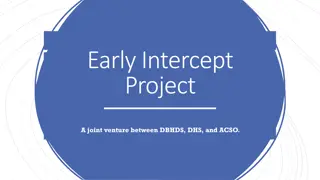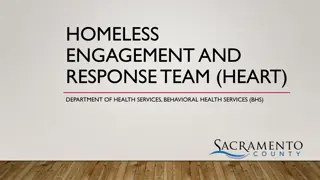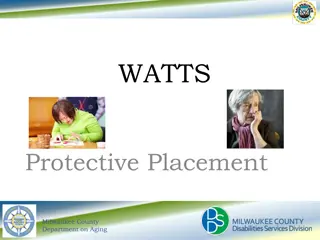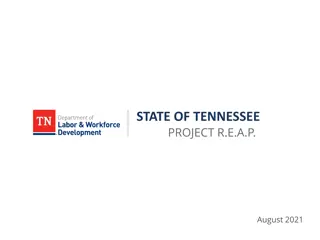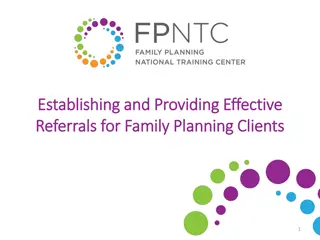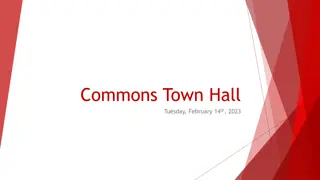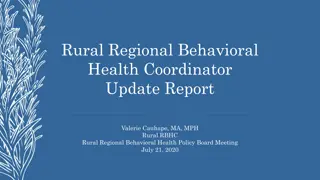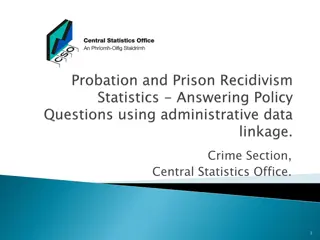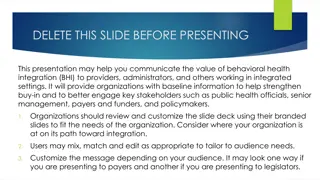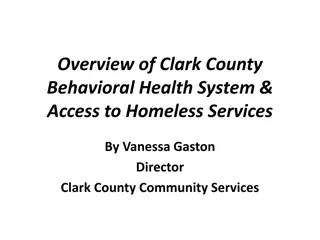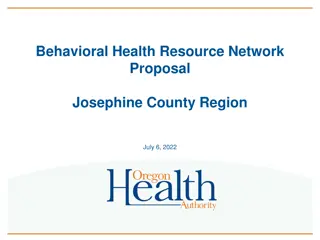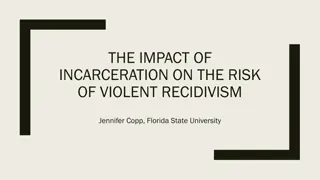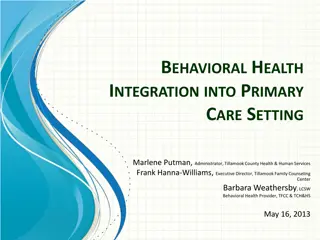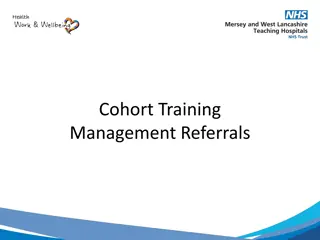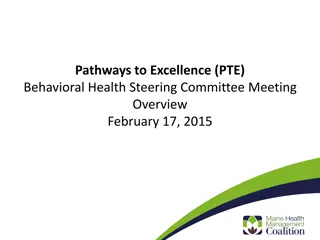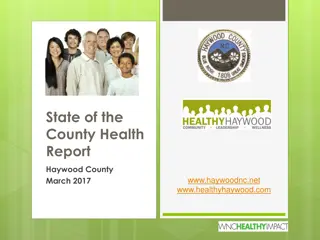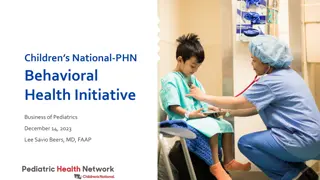Milwaukee County Behavioral Health Division NIATx Project 2015 - Improving Patient Referrals and Reducing Recidivism
The Milwaukee County Behavioral Health Division NIATx Project 2015 focused on increasing referrals to outpatient treatment and reducing emergency room recidivism by improving patient hand-offs to Access Clinic. By implementing same-day or next-day appointments and enhancing communication systems, the project saw a significant increase in referrals, improved show rates, and estimated cost savings. The team's next steps involve expanding the model, addressing barriers to patient attendance, and gathering more data for further improvements. The impact of the project has been beneficial for staff, leading to increased confidence among doctors and estimated monthly savings. Results were well-received by the County Mental Health Board.
Uploaded on Sep 17, 2024 | 0 Views
Download Presentation

Please find below an Image/Link to download the presentation.
The content on the website is provided AS IS for your information and personal use only. It may not be sold, licensed, or shared on other websites without obtaining consent from the author. Download presentation by click this link. If you encounter any issues during the download, it is possible that the publisher has removed the file from their server.
E N D
Presentation Transcript
Milwaukee County Behavioral Health Division NIATx Project 2015 Increasing Referrals to Outpatient Treatment; Reducing Emergency Room Recidivism Team Members: Emily Kenney, Amy Moebius, Andre Gilliam, Dr. Kelly Wahlen, Sean Ryan, Natasha Wortham, Amy Lorenz, John Hyatt
Project Aim Big Aim: Reduce inpatient psychiatric admissions and readmissions. Little Aim: Increase patient hand offs from PCS/OBS to Access Clinic to 10 clients per month by August 15, 2015.
Changes The Old: Patients were told to come to Access Clinic between 8am-4pm, Monday- Friday on a walk-in basis to access outpatient treatment. The New: While still in our care, we helped patients make an outpatient appointment at the Access clinic for the same day or the very next day. Patients were given a reminder/appointment card. A script was developed and a caring message was assembled that informed patients of the helpful benefits of continuing care. Doctors and nurses involved in the discharge plan- further engaging both in the process.
Results 500% increase in referrals to 12 per month 64% show rate (Note: We do not know the exact show rate from before as we just started tracking) Of those who showed, 93% had not gone back to PCS vs. 73% of those who did not show Estimated $7,713 in savings by a reduction in recidivism Marked increase in doctor satisfaction- being able to have an appointment quickly makes a big difference to their disposition Increase in communication across systems
Next Steps We are choosing to adopt this model and expand it Keep same day/next day appointment capability and add walk-over Give access to same day/next day to the Crisis Mobile Team, especially when considering dropping and emergency detention Continue to consider other groups who could use this collaboration Add What to Expect sheet for patients Gather patient satisfaction data Need to look into reducing barriers to showing up AODA diagnosis ED vs. voluntary status Transportation Walk-over vs. Later appointment
Impact Definitely beneficial for staff Increase in communication across systems. Doctors are more confident that patients have a good plan and are well taken care of. Their disposition and our ease in working with them increased. Estimated savings of $7,713 per month Results were presented to the new County Mental Health Board and received a round of applause
